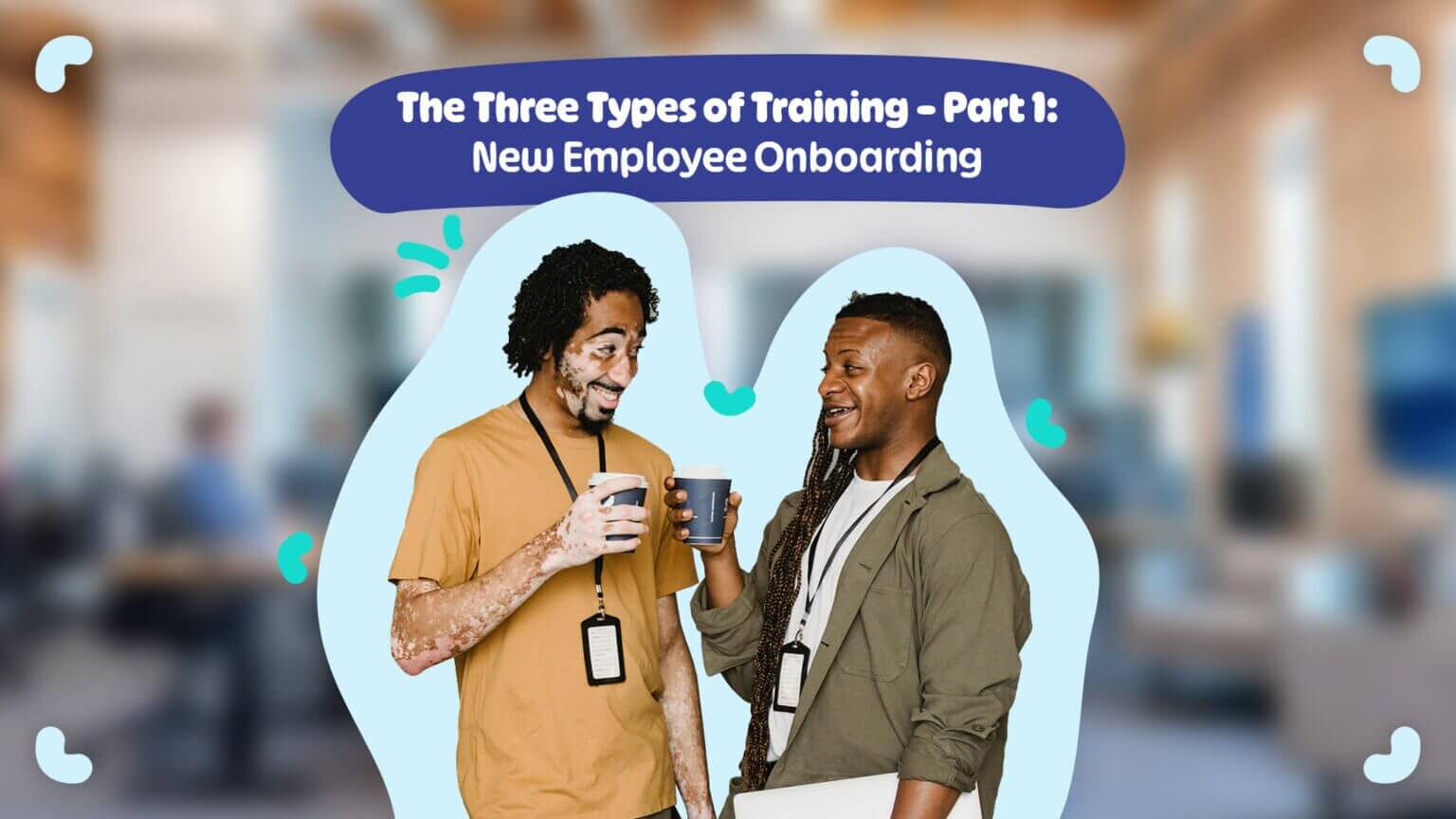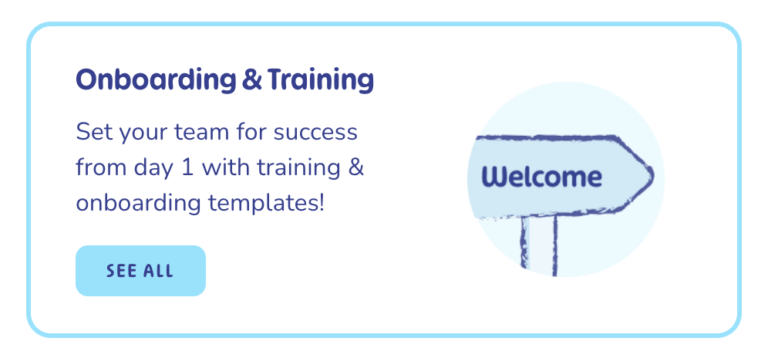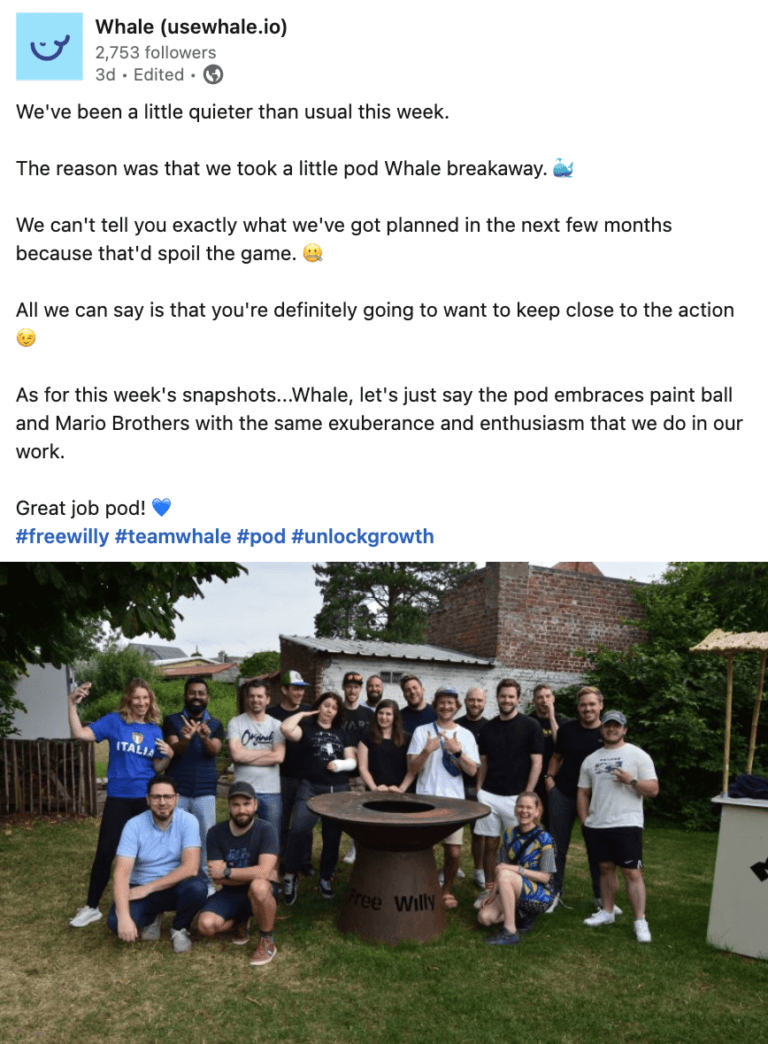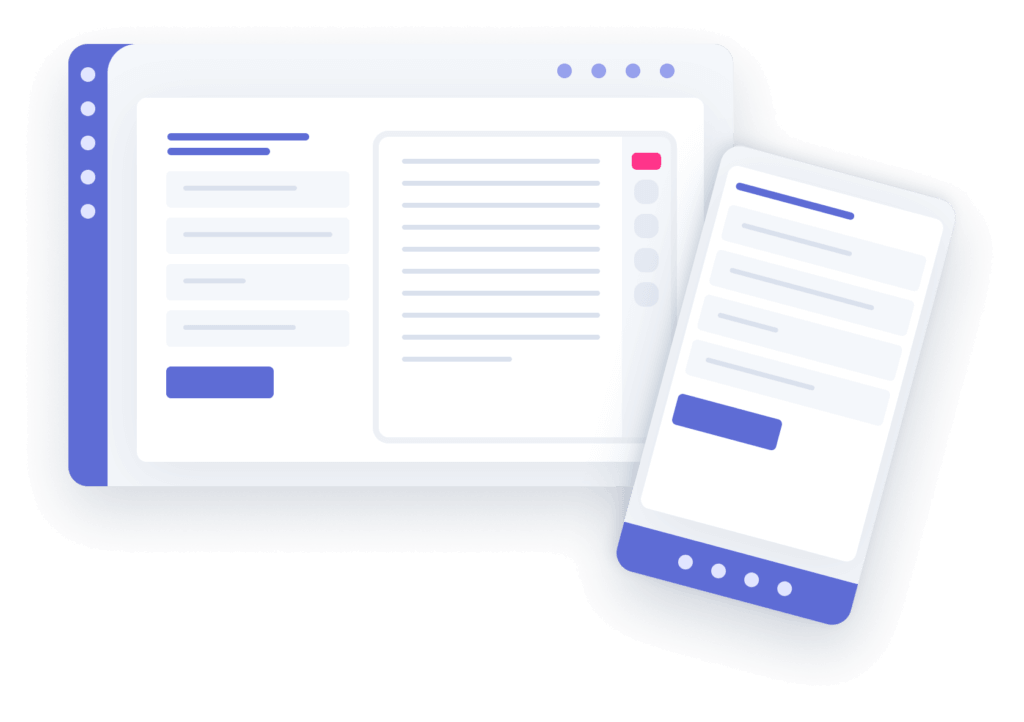Training is necessary for team members no matter where they may be in their journey but especially so for new employees in order to get off to the right start! Here are the key elements of new employee onboarding;
- Cover administrative concerns.
- Introduce new hires to the team
- Teach critical tools, skills and software
- Share the company vision (usually part of an employee handbook)
New employee onboarding can be a challenge but there are a variety of different types of training that are crucial to ensure you’re giving your staff the tools they need to succeed.
In this miniseries, we’re going to give you everything you need to understand the three most important types of training:
- New employee onboarding
- Ongoing Employee Training
- Transitional Training
Today, we’re going to kick things off with new employee onboarding.
Part 2: The three types of training – Part 2: Ongoing employee training
Part 3: The three types of training – Part 3: Transitional training
What is new employee onboarding?
Hiring new staff members into your business is a sure sign that things are going well.
Whilst the process of employing team members can be a difficult one, the work doesn’t stop there. Onboarding your new members of staff is vital to ensure they are aware of company processes and goals and are fully prepared to fulfill their role as expected.
Whilst often confused with orientation, onboarding is an ongoing activity that lasts the first three months of a new employee’s tenure.
Orientation, however is usually a one-time process for new employees and is usually conducted in your first week on the job.
OBJECTIVE NUMERO 1
Your goal is to make sure your team members feel part of the team and have sufficient knowledge about the working environment to get started.
A good onboarding process enables your staff member to not only integrate themselves into the working environment quickly but also have the best chance to succeed in their job.

Seventy percent of employees who had an exceptional onboarding experience say they have “the best possible job.” These employees are also 2.6x more likely to be extremely satisfied with their workplace—and more likely to stay.
So new employee onboarding is an essential part of the training journey if you want to set your team up for success!
The benefits of a good onboarding process
In addition to the above, a well-developed onboarding process will:
Enable
Provide them with a list of current department projects and cyclical procedures, highlighting where their role fits into each of these and how other roles interact with theirs. It allows the staff member to understand the ‘bigger picture’ of the business and understand their deliverables.
Enlighten
Reinforce the new hire’s reasons for choosing to work with your business by promoting the opportunities that exist to them and their potential progression paths. This can be done by scheduling time with the new hire and their line manager, discussing performance expectations, timelines for accomplishing various skills, and key business goals.
Inspire
New starters can feel overwhelmed with the amount of information they’re given during the onboarding phase. A great way to help them feel welcome is by providing them with a platform to share their knowledge and experiences. This helps them to feel more confident in their skills, whilst also encouraging a collaborative working environment.
PS Believe it or not hiring managers can also feel overwhelmed when hiring new team members so don’t forget to involve them in the process and prepare them adequately.

Setting your new employee onboarding goals
There are various different steps that your new starter will go through when they first begin working for your business, and we recommend a set process for each.
Step 1: New Employee Recruitment
Goal: To give them some insight into the culture of your company and what it’s like to work there. This can include things such as expected work ethic, leadership input as well as the official and unspoken norms that current staff work to.
Step 2: First Office Visit
If you have an office but you are onboarding remote team members, you’re going to have to adapt your process.
Goal: Provide a transparent glimpse of a day in the life at your office.
How do you do this if your new team member is off site? Consider things like a remote team breakfast. At Whale, we started an internal podcast so team members could get to know each other whether in the officer or working remotely.
Step 3: Early Onboarding for New Team Members
Goal: Create some excitement for your new starter around their role, upholding their decision to take a chance on a new job. You can do this by inviting the new team member to your Slack channel, sharing their new email details and sharing the itinerary for their first week at work.
Don’t forget to notify your current team about your new team member so they can be prepared and ready!

Step 4: Welcoming New Hires on their First Day
Goal: Ensure your new hire feels welcomed and appreciated. Build an induction plan for them to meet their co-workers and key contacts, whilst ensuring a personal approach.
This step involves consideration of a few different areas, including:
- Compliance: providing your employee with information around essential company rules, policies and legal procedures, as well as dress codes, start and finish times and any relevant government policies.
- Clarification: delivering the specifics for their role and what is expected of them. This should include a summary of the company’s organisational structure on who looks after which areas and who the employee will be reporting to.
- Connection: giving your employee the opportunity to connect and network with their colleagues will be vital in helping them to form relationships and settle into their new role quickly.
Step 5: Orienting New Employees in the First Weeks
Goal: Continue to provide support in helping your new employee understand what is expected of them and understand their future progression possibilities within the company.
Step 6: Ongoing Employee Engagement and Team Building
Goal: Assist your staff in further building key relationships by creating ample opportunity for them to socialise and network internally and make connections across the office.
New employee onboarding: building a checklist for new hires
It’s always a good idea to have an onboarding checklist prepared for your new hire’s first day on the job.
Below we’ve detailed our best practice example, but feel free to personalise this to whatever suits how your business runs.
Whale’s New Employee Onboarding Best Practice Checklist
Make sure you have your employee’s workstation prepared before they arrive with everything they need. This could include:
- Employee handbook
- An agenda for their first week
- Necessary office equipment, e.g. laptop and mobile phone
- Login details
- Employee ID (if applicable)
- A set of business cards
- A personalised letter from their manager or the CEO
Ensure there is an appropriate member of staff to greet your new employee and welcome them correctly to the business. This could be their manager, the office manager, or perhaps a member of the HR department.
- Provide a tour of the office, pointing out areas that they’ll need such as the kitchen, stationery cupboard, toilets, and emergency exits. You should also give a brief introduction to relevant teams that they will be interacting with.
- Take them through any required paperwork, providing any detail they need to complete them. This will also give them the opportunity to ask any questions that they may have. Ideally, you’ll want to keep paperwork to a minimum and use software as far as possible.
- Present your key company policies, and again provide an opportunity for them to ask any questions about how their role fits in with these.
- Make sure to keep in contact with your new hire throughout the day and arrange for a debrief at the end to get feedback on things such as how they found their first day and whether they have any outstanding questions that you can help them with.
If you are the hiring manager, you should also complete the following actions:
- Make sure you introduce your new employee to as many of their team members as possible in person but also prepare an email to send out to the wider team, at the very least. We prefer to hold a team breakfast at Whale to really get new team members engaged from the get go.
- Make sure any computer equipment is set up and running correctly and engage with the IT department to ensure things such as email and any required applications have been installed.
It’s always a good idea to have an onboarding checklist prepared for your new hire’s first day on the job.
Below we’ve detailed our best practice example, but feel free to personalise this to whatever suits how your business runs.
1. Prepare the Workstation
Include an employee handbook, an agenda for the first week, necessary equipment (e.g., laptop, mobile phone), login details, employee ID, business cards, and a personalized letter from the manager or CEO.
2. Greeting and Introduction
Ensure a staff member, such as a manager, office manager, or HR representative, greets and welcomes the new hire. Provide a tour of the office, introduce relevant teams, and highlight essential areas (kitchen, stationery cupboard, toilets, emergency exits).
3. Paperwork and Policies
Guide the new hire through required paperwork, company policies, and provide opportunities for questions. Ideally, you’ll want to keep paperwork to a minimum and use software as far as possible.
4. Continuous Contact
Maintain contact throughout the day and arrange a debrief to gather feedback and address any questions.
For Hiring Managers:
- Introduce the new employee to team members in person and via email.
- Hold a team breakfast to engage new team members.
- Ensure computer equipment is set up and coordinate with IT for necessary applications and email setups.
Going forward; building role-specific training
Build and roll out role-specific training, including information on:
- Key Responsibilities: Clearly outline what is expected in their role
- Team Structure: Provide details on team members, roles, and organizational structure.
- Job-Specific Tools: Train them on essential tools and software.
- Team Objectives: Explain how their role contributes to overall team goals.
- Introductory Meetings: Schedule meetings with key contacts.
- Initial Tasks: Assign tasks with opportunities for feedback and guidance.
- Mentorship: Assign a mentor or ‘work buddy’ to assist in their adjustment.
- Social Integration: Organize team lunches or events to foster relationships.
Whilst it’s, of course, important for your new employee to feel welcomed into the company, a good onboarding process will also give you a much better chance of retaining your new hires and giving them the best possible opportunity for success.
Part 2: The three types of training – Part 2: Ongoing employee training
Part 3: The three types of training – Part 3: Transitional training
If you’d like to find out more about onboarding or preparing a winning process for your team, why not download our ebook "How to integrate and optimize your onboarding processes"?
Got questions on your mind?
Book a demo with our team today!
FAQs on New Employee Onboarding Training
1. What is the onboarding process for new employees?
New employee onboarding involves new hire training and includes completing necessary paperwork, setting up workstations, clarifying role expectations, and facilitating social introductions. Starting from the acceptance of the employment offer, it continues through pre-employment, the first day, orientation, and potentially up to the first year.
This comprehensive process enhances retention, job satisfaction, and productivity, ensuring new hires are well-prepared and smoothly integrated into the company culture.
2. What are the 5 C's of new hire onboarding?
The 5 Cs of new employee onboarding and new hire training are:
- Clarity: Ensure new hires understand their roles, responsibilities, and objectives.
- Compliance: Familiarize them with legal and policy frameworks, including contractual details and company policies.
- Culture: Immerse new employees in the company’s ethos, values, and social norms.
- Connection: Build strong professional relationships within the team and company.
- Check-In: Provide ongoing support through regular check-ins to address concerns and adapt the onboarding process based on feedback.
3. What are the 5 stages of onboarding process?
The 5 stages of new employee onboarding and new hire training are:
- Pre-Boarding: Begins once the offer is accepted, involving early engagement and preparation.
- Company General Onboarding: Introduces company culture, history, and general procedures.
- Team and Role Onboarding: Focuses on specific role training and team integration.
- Ongoing Development: Involves continuous training, feedback, and support.
- Off-Boarding: Ensures a smooth transition when an employee leaves, reflecting company values.
4. What is an onboarding pathway?
An onboarding pathway is a structured plan for integrating new employees, combining new employee onboarding and new hire training. It centralizes information, feedback, and activities on a shared platform, enabling new hires to understand company culture, meet team members, and get up to speed with their roles.
This interactive and visual approach ensures smooth integration, team harmony, and effective communication, whether the onboarding is in-person or remote.









